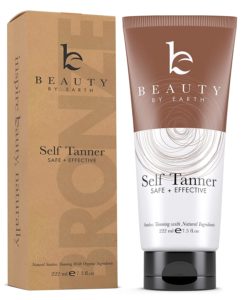During the longer and sunnier summer days, it would be nice to suntan at the beach or on the porch. However, for people with diabetes, certain concerns may arise making it necessary to understand whether it’s safe to go tanning with diabetes. For instance, some studies show that some diabetes symptoms such as hypoglycemia, heat exhaustion, and dehydration may occur while tanning, especially if you ignore the precautions recommended by your physician.
Tanning and Diabetes

For diabetes patients, dehydration is one of the most common issues that can come from tanning. Tanning or hot weather increases the risk of hyperglycemia, especially for people who are taking medication for lowering blood glucose levels.
Furthermore, people with diabetes have a higher risk of experiencing heat exhaustion during or after tanning. The main symptoms of exhaustion include dizziness, racing heart rate, cramping muscles, clammy skin, headaches, and sweating.
It is recommended that you check with your healthcare provider before exposing your skin to UV (ultraviolet) radiation from extreme sunlight or tanning salons.
Some tanning salons keep a record of information on their client’s medical history, treatments, and medications. Be sure to keep the file at your tanning salon up to date.
How is vitamin D produced in the body?
Vitamin D is produced by the body subcutaneously when the body is exposed to the sun or UVB (ultraviolet B radiation) or devices such as tanning beds.
You may be surprised to learn that vitamin D is also stored in adipose tissue and gradually released when production or intake is limited, such as during the winter months. Studies show that depending on seasonal changes, exposing your legs and arms for 5 to 30 minutes during mid-day is enough to stimulate vitamin D activity.
For people with fat malabsorption, which tends to reduce vitamin D availability, exposure to ultraviolet B radiation while adhering to recommended therapeutic guidelines has been shown to help treat vitamin D deficiency.
However, according to recent studies, in individuals aged 65 and above, exposure to the sun does not affect the inverse relationship between vitamin D levels and percent body fat. This shows that increased exposure to the sun, especially in obese people, may be ineffective and might put increase their risk of developing other health complications.
How can you protect yourself?
The only way of protecting yourself from getting these symptoms is by limiting your exposure. Moreover, if you want to use a tanning device, enquire about the recommended exposure limit for your specific condition and skin type.
The salon staff or the manufacturer can help with this kind of information. The device should have a timer that alerts the staff or automatically turns off the light once you reach your exposure limit.
Be sure to stay well-hydrated throughout the entire tanning process. Monitor your blood glucose levels by taking accurate measurements before, during, and after tanning. Moreover, you can also keep a fast-acting source of carbohydrates on hand.
Glucose tablets are an excellent source of fast-acting carbohydrates. Lastly, ensure that your diabetes supplies including insulin and glucose test strips are stored in a cool place while you’re tanning.
It’s important to know your tanning lotion if you have diabetes
There’s a wide variety of tanning products whose ingredients do not include sunscreen. Remember, sunscreen is an essential component that plays an important role in sun tanning by blocking UVA as well as UVB. You should keep in mind that all it takes is a few serious sunburns to raise complications and damage the skin.
The FDA has cautioned consumers against using sun-tanning products that lack sunscreen and advises consumers to read labels and ensure that the product offers SFP protection.
Sunscreen is considered an OTC (over-the-counter) item. Choose sun-tanning products with an
Apply sunscreen liberally to the skin for about 30 minutes before going out in the sun. You can apply sunscreen every 2 hours after the initial application.
Safe tanning with diabetes
It is recommended that you learn more about tanning, especially with conditions such as diabetes. Another safe alternative is to self-tan using sunless tanning lotion. The lotion gives you a great tan without the dangerous effects that come with exposing the skin to harmful UVA and UVB.



